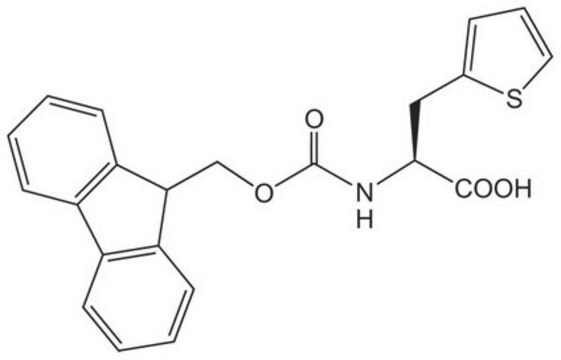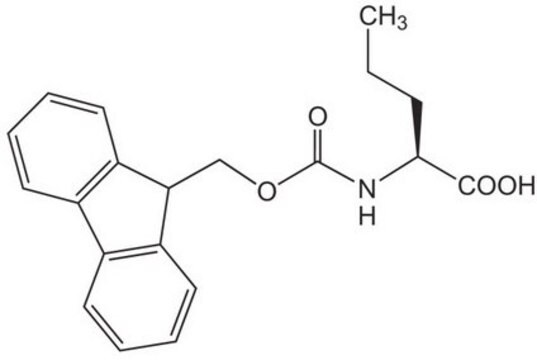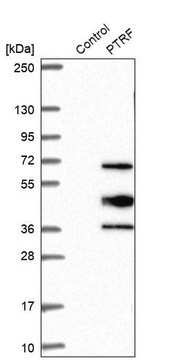ABE1953
Anti-PTRF/Cavin-1 Antibody
from rabbit, purified by affinity chromatography
Synonym(s):
Polymerase I and transcript release factor, PTRF/Cavin-1, Cavin-1
About This Item
Recommended Products
biological source
rabbit
Quality Level
antibody form
affinity isolated antibody
antibody product type
primary antibodies
clone
polyclonal
purified by
affinity chromatography
species reactivity
rat, human
technique(s)
immunocytochemistry: suitable
immunohistochemistry: suitable (paraffin)
western blot: suitable
NCBI accession no.
UniProt accession no.
shipped in
wet ice
target post-translational modification
unmodified
Gene Information
human ... CAVIN1(284119)
General description
Specificity
Immunogen
Application
Western Blotting Analysis: A representative lot detected exogenously expressed human PTRF/Cavin-1 in transfected 22Rv1 and LNCaP cells (Moon, H., et al. (2014). Oncogene 33(27):3561-3570).
Immunohistochemistry Analysis: A representative lot detected reduced PTRF/Cavin-1 immunoreactivity in paraffin-embedded malignant prostate stroma tissue samples when compared with normal prostate stroma and benign prostatic hyperplasia (BPH) specimens. A lack of PTRF/cavin-1 immunoreactivity in prostate epithelia was seen among both normal and malignant samples (Moon, H., et al. (2014). Oncogene 33(27):3561-3570).
Immunocytochemistry Analysis: A representative lot detected surface caveola localization of exogenously expressed human PTRF/Cavin-1 among transfected LNCaP cells (Moon, H., et al. (2014). Oncogene 33(27):3561-3570).
Quality
Western Blotting Analysis: A 1:1,000 dilution of this antibody detected PTRF/Cavin-1 in 10 µg of rat skeletal muscle myoblast L6 cell lysate.
Target description
Other Notes
Not finding the right product?
Try our Product Selector Tool.
Storage Class Code
12 - Non Combustible Liquids
WGK
WGK 1
Flash Point(F)
Not applicable
Flash Point(C)
Not applicable
Regulatory Listings
Regulatory Listings are mainly provided for chemical products. Only limited information can be provided here for non-chemical products. No entry means none of the components are listed. It is the user’s obligation to ensure the safe and legal use of the product.
JAN Code
ABE1953:
Certificates of Analysis (COA)
Search for Certificates of Analysis (COA) by entering the products Lot/Batch Number. Lot and Batch Numbers can be found on a product’s label following the words ‘Lot’ or ‘Batch’.
Already Own This Product?
Find documentation for the products that you have recently purchased in the Document Library.
Our team of scientists has experience in all areas of research including Life Science, Material Science, Chemical Synthesis, Chromatography, Analytical and many others.
Contact Technical Service








